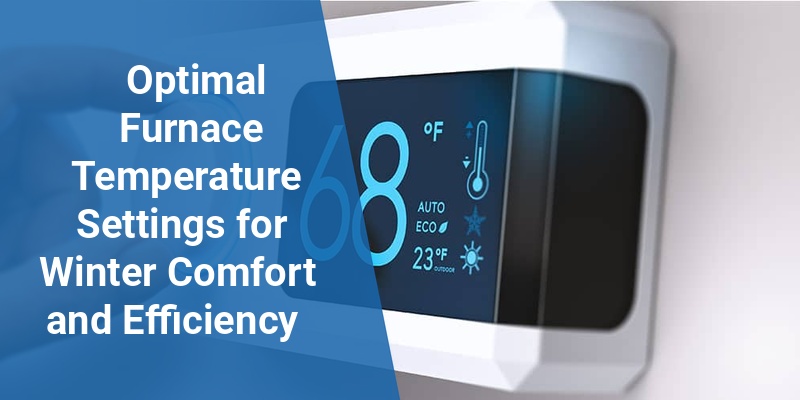Setting the furnace temperature correctly during winter is essential for maintaining home comfort while managing energy costs. Americans seek the best temperature for a furnace in winter that balances warmth and efficiency. This article explores ideal thermostat settings, factors influencing temperature choice, and tips to optimize furnace performance for cold months.
| Aspect | Recommended Setting | Benefits |
|---|---|---|
| Daytime Comfort Temperature | 68°F (20°C) | Comfortable warmth, energy-efficient |
| Nighttime Temperature | 60-65°F (15-18°C) | Energy savings, better sleep quality |
| Unoccupied Home Temperature | 55-60°F (13-15°C) | Minimized energy usage and frost prevention |
| Programmable Thermostat Use | Adjust by time of day and occupancy | Maximized comfort and efficiency |
Recommended Furnace Temperature for Winter Comfort
The ideal furnace temperature for winter in most American homes is typically set at 68°F during the day. This temperature is recognized by the U.S. Department of Energy as a balance between comfort and energy savings. Maintaining this setting helps ensure living spaces remain warm without excessive energy consumption.
At night or when the household is asleep, lowering the temperature to 60-65°F can provide significant energy savings while supporting better sleep quality. The cooler temperature reduces the burden on the furnace and prevents overheating.
Factors Influencing the Best Furnace Temperature Setting
Choosing the best temperature for your furnace depends on several variables:
- Home Insulation: Well-insulated homes retain heat better and can maintain comfort with slightly lower furnace settings.
- Occupant Sensitivity: Individual preferences for warmth vary; some might need 70°F for comfort, while others prefer cooler settings.
- Energy Costs: Higher furnace temperatures translate to increased heating bills; lower settings can reduce utility costs.
- Furnace Efficiency: Modern high-efficiency furnaces distribute heat more effectively at moderate temperature settings.
- Climate Severity: Regions with harsher winters may require slightly higher settings to maintain comfort.
Using Programmable Thermostats to Optimize Furnace Temperature
Programmable thermostats enable precise control over furnace temperature based on time and occupancy. This technology allows automatic adjustments, aligning heating schedules with daily routines.
Advantages of Programmable Thermostats:
- Energy Savings: Reducing furnace heat during work hours or nighttime cuts unnecessary energy usage.
- Consistent Comfort: Temperatures adjust swiftly before occupancy, ensuring a warm environment upon arrival.
- Ease of Use: Many models offer smartphone control and learning features for personalized heating plans.
Balancing Furnace Temperature and Energy Efficiency
Maintaining the furnace at unnecessarily high temperatures can lead to elevated energy bills and increased wear on heating equipment. The U.S. Department of Energy advises setting thermostats at 68°F while home and awake, lowering to 60-65°F during sleep or extended absence.
Every degree higher above 68°F can increase heating costs by about 3-5%. Therefore, using the lowest effective setting provides optimal savings without sacrificing comfort.
Call 888-906-9139 for Free Local HVAC Quotes – No Obligation, Just Savings!
Additional Tips to Enhance Furnace Efficiency in Winter
- Regular Maintenance: Clean or replace furnace filters monthly during peak use to keep airflow efficient.
- Seal Leaks: Identify and seal window or door gaps to prevent heat loss.
- Use Ceiling Fans: Reverse fan direction clockwise during winter to circulate warm air downward.
- Layer Clothing and Bedding: Personal warmth reduces the need for higher ambient temperatures.
- Close Unused Rooms: Restrict heating to occupied spaces to conserve energy.
Impact of Furnace Temperature on Health and Sleep
Optimal furnace temperatures contribute to indoor air quality and overall health. Temperatures between 60-68°F promote better respiratory comfort and sound sleep. Excessively warm indoor air can dry mucous membranes, while colder temperatures might increase hypothermia risks in sensitive populations.
Maintaining moderate furnace temperatures helps support immune health and restful sleep during cold winters.
Summary of Optimal Furnace Temperature Settings for Different Scenarios
| Scenario | Temperature Setting (°F) | Reason |
|---|---|---|
| Home Occupied, Awake | 68 | Comfort and energy efficiency |
| Home Occupied, Asleep | 60-65 | Energy savings and better sleep |
| Unoccupied Home | 55-60 | Prevent freezing and reduce energy use |
| Vacation/Extended Absence | 50 | Minimize heating costs and avoid pipe freeze |
